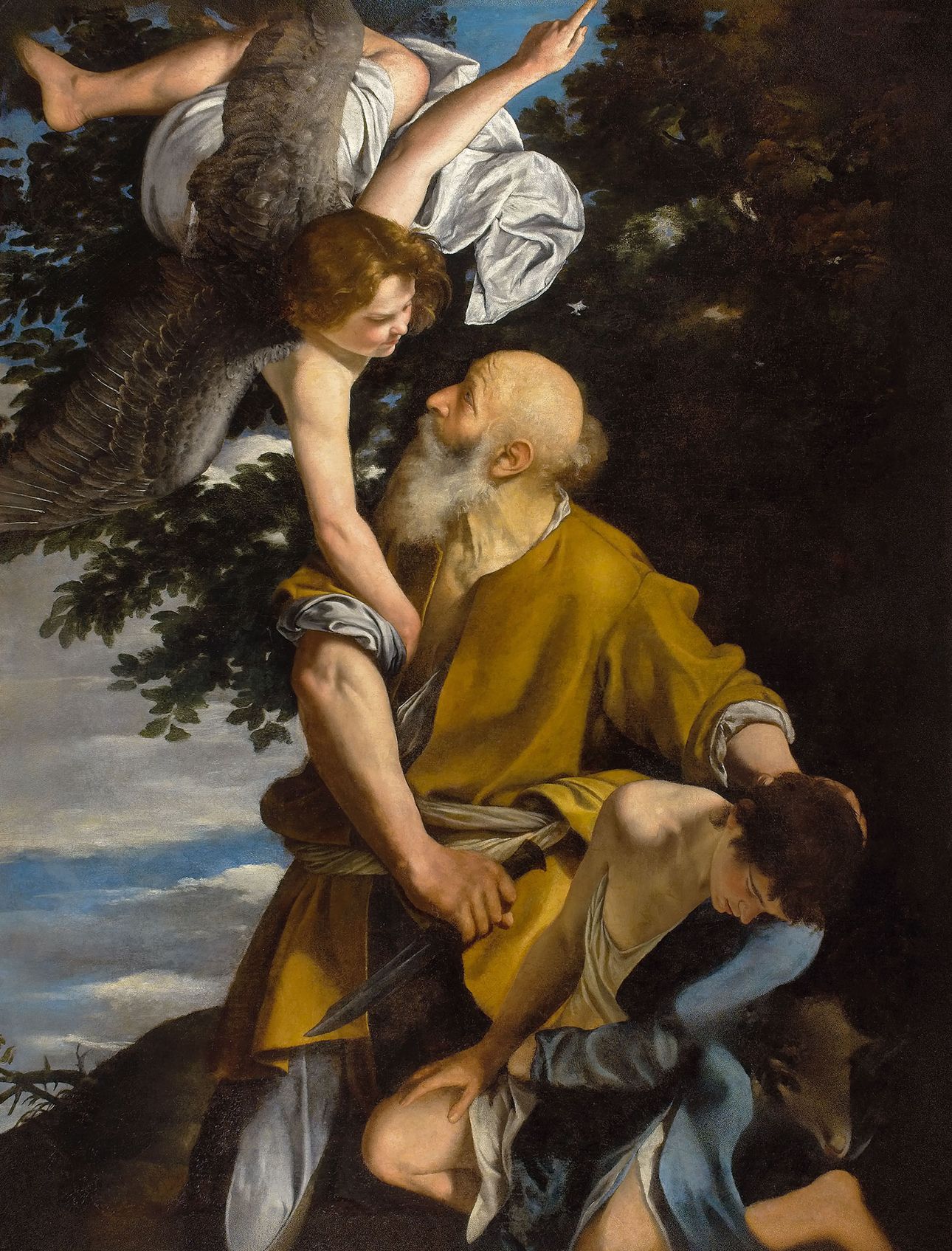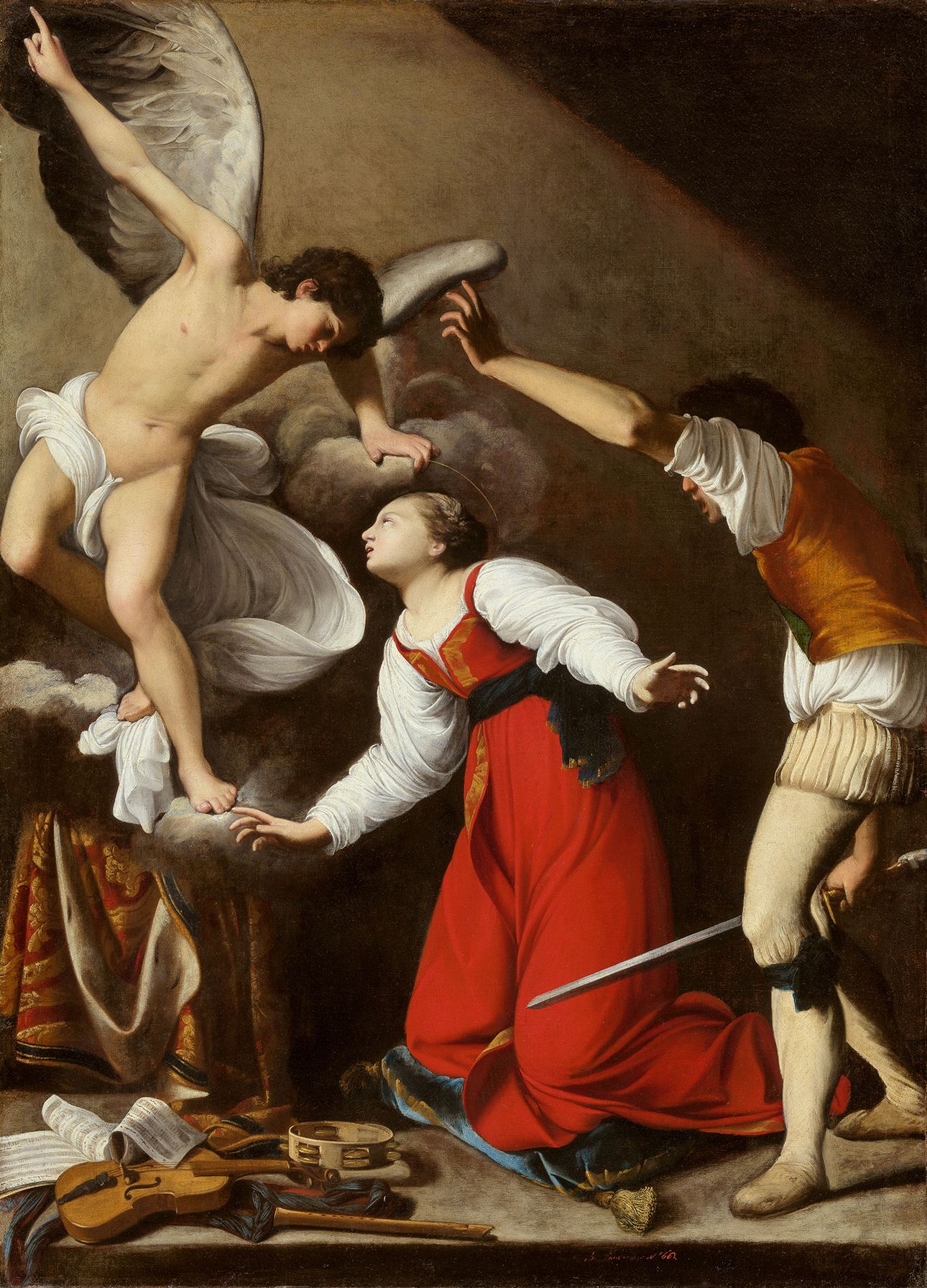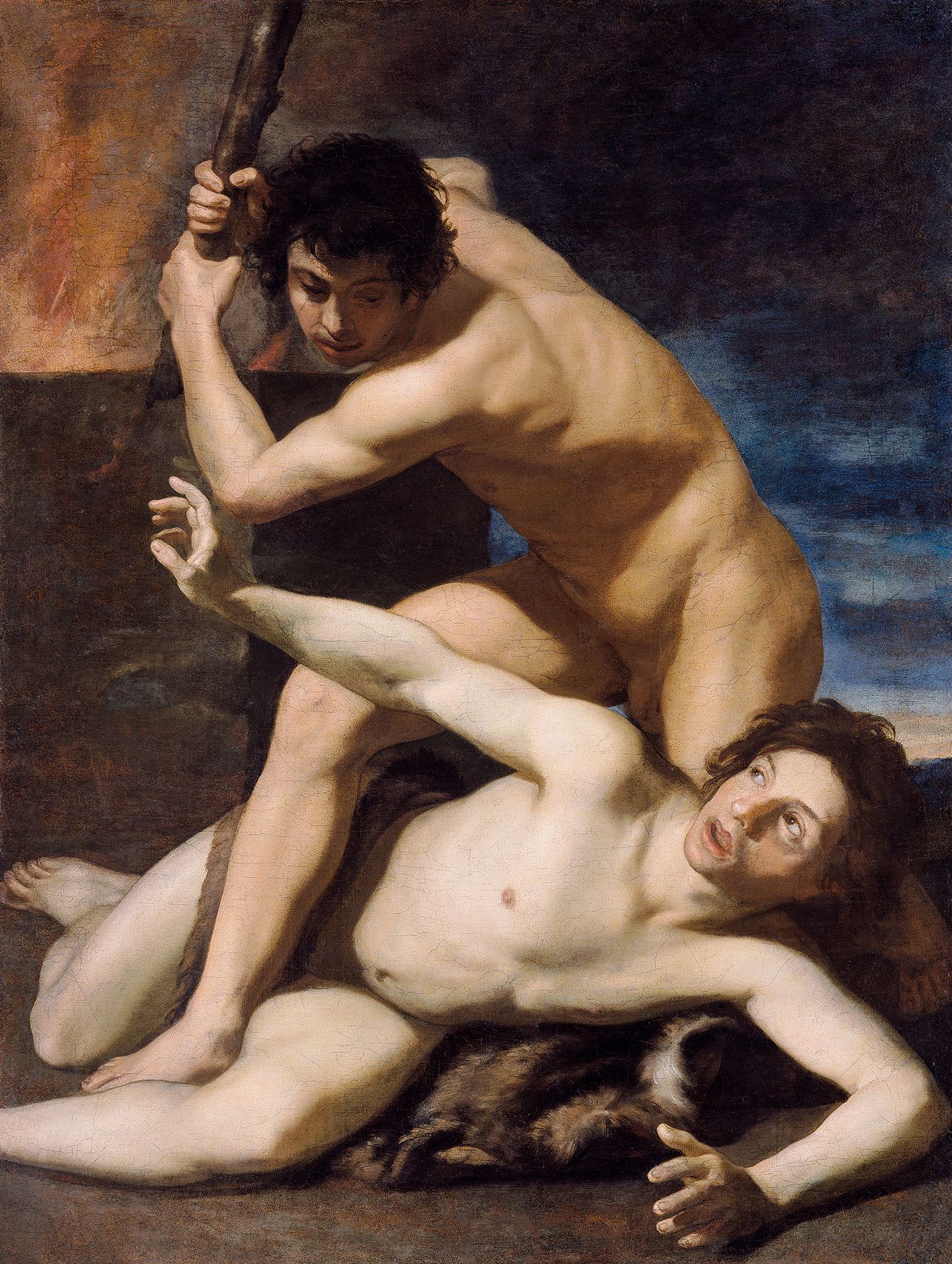Indeed, some of the artists in Rome were also engaged as actors and stage designers during this period.
Caravaggio, Bernini and their successors are oftentimes valued as predecessors of dramatic advisors and directors. Their works of art show action in such moving and gripping ways as filmmakers do today.
Why are these paintings so gripping?
One reason is the choice of scene.
When an artist depicts a narrative in the shape of a painting or sculpture, some consideration will have gone into choosing a particular moment from the story. The chosen moment shapes the effect on the viewers and their emotions.
The greatest emotions are triggered at the decisive turning point of an action: the moment in which the main character‘s luck is changing.
Artists were aware of this, and they made use of this effect. Indeed, some of the artists in Rome were also engaged as actors or stage designers during this period. Their abilities and experiences from theatre aided them in their fine arts.
Where the turning point of a story is joined by a surprising insight, the moment gains particular emotionality. It is a challenge to translate inner affects into a picture. Gesticulation and facial expressions need to be chosen and depicted with a sensitive hand. The motion caused by inner excitement betrayed visibly to the outside world was called moto in the seventeenth century.
Abraham‘s face shows shock and surprise. As soon as the angel intercedes, he knows that his son will live.
Gentileschi chose this moment of greatest tension. The very essence and meaning of the sacrifice of Isaac is tangible.
Orazio Gentileschi
(Pisa 1563–1639 London)
The Sacrifice of Isaac
c. 1612
Canvas, 198 × 150,5 cm
Genua, Galleria Nazionale della Liguria a Palazzo
Spinola, inv.-no. GNL 37/1986

Theatrical body postures can serve the presentation of action (azione).

Saraceni‘s Cecilia shows the henchman raising his hand up high. His sword is about to strike the saint. Cecilia has submitted to her fate and is entranced by her vision: a bright, youthful angel has descended towards her. His feet are already touching the earth. He indicates to Cecilia her place in heavenly eternity.
Carlo Saraceni
(Venice 1579–1620 Venice)
The Martyrdom of St Cecilia
c. 1610
Canvas, 135,9 × 98,4 cm
Los Angeles, The Los Angeles County Museum, gift of the Ahmanson Foundation, inv.-no. AC1996.37.1
Manfredi created a remarkable composition to depict Cain and Abel: he interlocked the two brother‘s body parts according to the Renaissance principle of the triangle.
The artist needed to be deeply familiar with anatomy and balance in order to create an authentic depiction of this moving scene. The movements of Cain and Abel reflect their emotions: anger and fear.
Bartolomeo Manfredi
(Ostiano/Mantua 1582–1622 Rome)
Cain Slaying Abel
c. 1615
Canvas, 152 × 115 cm
Vienna, Kunsthistorisches Museum,
Inv.-no. 363

These scenes recall film stills. A single look draws us into the midst of the events to relive the moment in the here and now. We show it, too: as we relive the feelings of the actors inside ourselves, we display them in our expressions and gesticulation. That was the aim of Baroque art.